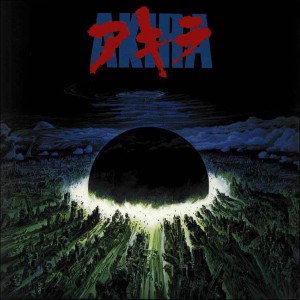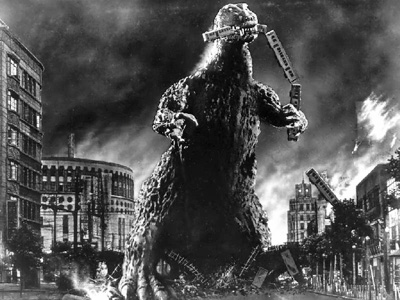 Apocalyptic thinking seems to be the order of the day lately. As Max Brooks, author of various zombie survival guides has said, “People have apocalypse on the brain right now…. It’s from terrorism, the war, [and] natural disasters like Katrina.” The nation with perhaps the greatest sense of apocalypse is Japan. The devastation wrought in World War II by two American nuclear bombs in Hiroshima and Nagasaki seared the national conscience in such a way as to shape the country’s daily life in post-apocalyptic terms. This is clearly evident in Japanese popular culture in things like anime.
Apocalyptic thinking seems to be the order of the day lately. As Max Brooks, author of various zombie survival guides has said, “People have apocalypse on the brain right now…. It’s from terrorism, the war, [and] natural disasters like Katrina.” The nation with perhaps the greatest sense of apocalypse is Japan. The devastation wrought in World War II by two American nuclear bombs in Hiroshima and Nagasaki seared the national conscience in such a way as to shape the country’s daily life in post-apocalyptic terms. This is clearly evident in Japanese popular culture in things like anime.
Susan J. Napier addresses this topic in her fine book Anime from Akira to Howl’s Moving Castle: Experiencing Contemporary Japanese Animation, updated edition (New York: Palgrave Macmillan, 2005) in a chapter titled “Waiting for the End of the World: Apocalyptic Identity.” Napier opens this chapter with a discussion of the significance of Japan’s devastating experiences in shaping apocalyptic thought as expressed in anime:
Princess Mononoke’s vision of natural disaster is a distinctive one, but its emphasis on apocalypse is certainly not unique in Japanese animation. Indeed, perhaps one of the most striking features of anime is its fascination with the theme of apocalypse. From Akira‘s unforgettable vision of the mammoth black crater that was once Tokyo to Neo Genesis Evangelion‘s bleak rendering of social and psychological disintegration, images of mass destruction suffuse contemporary anime. While some, such as Princess Mononoke, hold out a promise of potential betterment alongside their vision of collapse, many others tend to dwell on destruction and loss. Destructive or hopeful, these anime seem to strike a responsive chord in the Japanese audience. In fact, it might be suggested that the apocalyptic mode, often combined with the elegiac, or even the festival, is not simply a major part of anime but is also deeply ingrained within contemporary Japanese identity.
Napier goes on to mention the aspect of Japan’s experience that has contributed to this, including the atomic bomb, a ten year recession, followed by great economic growth. These factors, she suggests, have led to an “apocalyptic identity” that she feels is embraced by its citizens.
 Japanese popular culture has wrestled with this apocalyptic identity and post-apocalyptic cultural development in various ways. In decades past it was the creature Godzilla who rose from the sea to wreak havoc as a result of the effects of radiation. More recently it has been anime that has served as a major vehicle for conveying apocalyptic identity. Sadly, this island nation has recently experienced a great natural disaster through earthquakes and tsunamis. This too has resulted in the threat of nuclear disaster as several of Japan’s reactors experience at least partial meltdown. Japan has many years of experience in living with a sense of apocalyptic identity and in carving out a nation in a post-apocalyptic world. Here’s to hoping that this latest incident will stabilize even as these events surely reinforce apocalyptic thinking, and may lead to the development of future Japanese monstrosity in popular culture.
Japanese popular culture has wrestled with this apocalyptic identity and post-apocalyptic cultural development in various ways. In decades past it was the creature Godzilla who rose from the sea to wreak havoc as a result of the effects of radiation. More recently it has been anime that has served as a major vehicle for conveying apocalyptic identity. Sadly, this island nation has recently experienced a great natural disaster through earthquakes and tsunamis. This too has resulted in the threat of nuclear disaster as several of Japan’s reactors experience at least partial meltdown. Japan has many years of experience in living with a sense of apocalyptic identity and in carving out a nation in a post-apocalyptic world. Here’s to hoping that this latest incident will stabilize even as these events surely reinforce apocalyptic thinking, and may lead to the development of future Japanese monstrosity in popular culture.





There are no responses yet